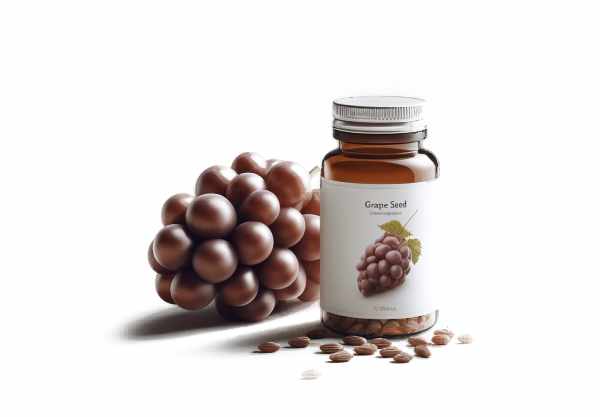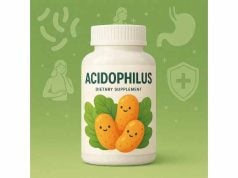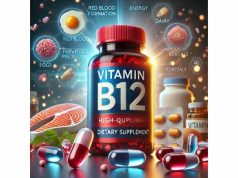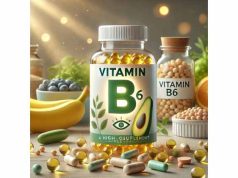
Grape Seed Extract has attracted considerable attention in recent years as a natural supplement for bolstering visual clarity and protecting the delicate structures of the eye. Rich in powerful antioxidants known as proanthocyanidins, this extract may offer multiple advantages—from helping to maintain optimal blood flow to the retina to shielding ocular tissues against harmful free radicals. Individuals dealing with daily screen usage, age-related changes, or occasional eye fatigue often look to Grape Seed Extract for proactive and supportive eye care. In this article, we explore how Grape Seed Extract may enhance vision, review scientific perspectives, and provide guidance on effective usage strategies.
Table of Contents
- Introducing Grape Seed Extract: A Comprehensive Overview
- The Mechanisms Behind Grape Seed Extract’s Vision-Enhancing Effects
- Central Eye-Related Benefits of Grape Seed Extract
- Practical Steps for Incorporating Grape Seed Extract for Maximum Ocular Support
- Evolving Research and Clinical Observations on Grape Seed Extract
- Frequently Asked Questions About Grape Seed Extract
- References and Citations
Introducing Grape Seed Extract: A Comprehensive Overview
Grape Seed Extract is derived from the small seeds within grapes, often those leftover from winemaking processes. Rich in bioactive compounds, it is particularly celebrated for its concentrated supply of proanthocyanidins—antioxidants that help neutralize damaging free radicals. This broad-spectrum natural supplement has gained popularity across wellness communities and holistic practitioners alike, thanks to its diverse potential benefits for cardiovascular health, skin elasticity, and notably, eyesight.
Brief History and Source
- Winemaking Byproduct
- After grapes are pressed for juice or wine, the seeds remain as a residual material.
- Far from being merely waste, these seeds contain valuable phytochemicals that have been used in herbal and integrative medicine for decades.
- Initial Scientific Interest
- Researchers in France and other parts of Europe were among the first to investigate grape seeds for their high procyanidin content.
- Early studies noted improvements in vascular function, hinting that the seeds’ antioxidants could also support microcirculation around sensitive organs like the eyes.
Nutritional and Chemical Composition
- Oligomeric Proanthocyanidins (OPCs)
- These potent antioxidants have been linked to multiple protective effects, including anti-inflammatory action and collagen stabilization.
- Within the context of ocular wellness, OPCs are believed to help maintain the structural integrity of blood vessels supplying the retina.
- Additional Antioxidants
- Grape Seed Extract often contains flavonoids, phenolic acids, and vitamin E.
- These compounds work together to create a comprehensive shield against oxidative damage that can degrade eye tissues over time.
- Low in Calories, High in Potency
- While grapes themselves can contain sugar, the extract focuses on the nutrient-rich seeds.
- As a supplement, Grape Seed Extract delivers concentrated benefits without contributing significantly to daily caloric intake.
Popular Forms of Consumption
- Capsules and Tablets
- Convenient and standardized, these formulations typically specify a particular concentration of OPCs (e.g., 95% proanthocyanidins).
- Ideal for those looking for an exact daily dose without additional fillers.
- Powders
- Often blended into smoothies, juices, or even protein shakes for a nutrient boost.
- Can be versatile but requires careful measurement to ensure consistent intake.
- Tinctures
- Liquid extracts that may absorb more rapidly, though the taste can be slightly astringent or bitter.
- Beneficial for people who prefer not to swallow pills or want flexible dosing.
Traditional and Emerging Uses
- Skin and Cardiovascular Health: Historically, Grape Seed Extract was recommended to enhance circulation, soothe varicose veins, and promote a healthy inflammatory response.
- Vision Maintenance: More modern uses point to eye health as one of the key areas where Grape Seed Extract may demonstrate significant advantages, from encouraging strong capillary walls to reducing oxidative stress in ocular tissues.
By recognizing Grape Seed Extract’s origin, composition, and established role in holistic health, it becomes clearer why this supplement is highly regarded as an ally for those aiming to maintain or improve their vision. The next sections delve into the specific mechanisms and potential benefits for eye health, offering a fuller perspective on this powerhouse botanical.
The Mechanisms Behind Grape Seed Extract’s Vision-Enhancing Effects
Vision is a complex process reliant on numerous factors—sharpness of the lens, integrity of the retina, clarity of the vitreous humor, and healthy blood flow to and from the eye. Grape Seed Extract, with its rich antioxidant profile, can provide support to many of these elements.
Antioxidant Power for Ocular Integrity
- Free Radical Neutralization
- The eye, exposed to both light and oxygen, is vulnerable to oxidative stress.
- Over time, unchecked free radicals can damage proteins and lipid membranes, leading to compromised vision.
- The proanthocyanidins found in Grape Seed Extract scavenge these reactive molecules, potentially slowing or reducing cellular damage.
- Protection of Lens Proteins
- The clarity of the lens relies heavily on maintaining structured proteins free from oxidation.
- By curtailing oxidative disruptions, Grape Seed Extract may help preserve lens transparency, indirectly supporting sharper vision.
Enhanced Circulation to the Retina
- Strengthening Capillaries
- Retinal microcirculation is vital for delivering nutrients and oxygen to the photoreceptors that allow sight.
- Studies show that proanthocyanidins may assist in reinforcing the collagen matrix within blood vessel walls, making them more resilient against damage or leakage.
- Microvascular Efficiency
- Efficient blood flow helps prevent fluid buildup and promotes better retinal nutrient uptake.
- Grape Seed Extract’s potential to optimize vessel function could help prevent microvascular stress that contributes to eye fatigue or blurred vision.
Support for the Macula and Photoreceptors
- Macular Pigment Stability
- The macula is a region in the retina responsible for central, high-resolution vision.
- Carotenoids like lutein and zeaxanthin typically protect this area from blue light damage, but antioxidants from Grape Seed Extract may add another layer of defense.
- Rod and Cone Preservation
- The eye’s rod and cone cells enable night and color vision, respectively.
- Chronic oxidative stress or insufficient blood supply can degrade these cells over time.
- By promoting healthy circulation and robust antioxidant activity, Grape Seed Extract may contribute to the long-term vitality of these critical structures.
Potential Modulation of Inflammatory Pathways
- Influence on Cytokines
- Prolonged inflammation in the ocular region can manifest as discomfort, redness, or dryness, and in some cases, it can escalate to more serious eye concerns.
- Research indicates that proanthocyanidins may inhibit certain pro-inflammatory markers, supporting a balanced immune response in eye tissues.
- Reduced Swelling and Irritation
- Chronic low-level inflammation around the eyes may impair tear film stability, nutrient transfer, and overall comfort.
- The anti-inflammatory and anti-edema properties of Grape Seed Extract can help keep inflammatory triggers in check, thereby promoting a calmer ocular environment.
Synergy with Other Eye-Friendly Nutrients
- Pairing with Vitamins C and E
- Vitamins C and E have well-known antioxidant roles. When used together with Grape Seed Extract, these vitamins can form a more comprehensive protective network for eye cells.
- Some clinical trials suggest that a multi-ingredient approach yields more robust results than any single supplement alone.
- Combining with Carotenoids
- Lutein, zeaxanthin, and astaxanthin are often found in specialized eye formulas.
- Grape Seed Extract’s vascular and antioxidant benefits may complement the direct photoprotective effects of these carotenoids, contributing to an even stronger shield against daily wear and tear on the eyes.
Although no single nutrient or supplement can guarantee perfect eyesight, the synergy of antioxidants, vascular support, and possible anti-inflammatory pathways offered by Grape Seed Extract makes it an appealing option. By addressing some of the most common underlying factors in eye stress and aging, it lays a foundation for healthier, more robust vision over the long term.
Central Eye-Related Benefits of Grape Seed Extract
For many, the overarching question is: How exactly might Grape Seed Extract help maintain or improve day-to-day vision? Below are some key benefits that have been associated with consistent use of this potent supplement.
1. Easing Digital Eye Strain
Modern lifestyles often involve heavy screen exposure, whether for work, education, or leisure. Extended periods staring at digital devices can lead to dryness, irritation, and fatigue.
- Boosting Tear Quality
- Antioxidants in Grape Seed Extract may support the Meibomian glands, which produce oils essential for maintaining a stable tear film.
- A healthier tear film relieves dryness and discourages the discomfort associated with screen use.
- Mitigating Blue Light Damage
- While Grape Seed Extract isn’t a direct filter for blue light, its capacity to strengthen capillaries and defend retinal cells provides indirect protection.
- The reduced oxidative burden can help the eyes rebound more quickly from prolonged digital exposure.
2. Preserving Sharpness in Aging Eyes
Vision naturally evolves with age, often becoming more susceptible to conditions like age-related macular degeneration (AMD) and cataracts.
- Counteracting Oxidative Stress
- Aging eyes accumulate oxidative damage. The proanthocyanidins in Grape Seed Extract may help manage this buildup by neutralizing free radicals before they create lasting harm.
- This function is especially critical for the macula, a site often affected in later years.
- Slowing Cataract Formation
- Although no supplement can completely halt cataracts, antioxidants are theorized to slow their progression by maintaining lens clarity.
- By defending lens proteins against oxidative changes, Grape Seed Extract may modestly reduce the pace at which the lens becomes cloudy.
3. Enhancing Night Vision or Low-Light Visibility
Night vision relies on rod cells that can be vulnerable to poor circulation or nutritional deficits. While research is ongoing, anecdotal accounts suggest a potential benefit:
- Promoting Nutrient Delivery
- Grape Seed Extract’s vascular-friendly properties could optimize how essential vitamins and minerals reach rod cells, potentially fostering better low-light performance.
- Individuals who struggle with driving or tasks in dim settings may notice minor improvements over time with consistent use.
- Reduced Eye Strain After Dark
- If your eyes tire quickly under nighttime conditions, improved microcirculation and antioxidant support can mitigate some of that strain, possibly enhancing comfort and alertness.
4. Supporting Retinal Health
The retina transforms light into nerve signals for the brain. Damage to this critical structure often leads to partial or severe vision impairment.
- Strengthening Retinal Blood Vessels
- Weakened vessels can cause microbleeds or fluid leaks, which hamper clear sight.
- Grape Seed Extract’s role in reinforcing collagen-based structures within blood vessels may help stave off these microvascular issues.
- Contributing to Photoreceptor Longevity
- Photoreceptors (rods and cones) can become overworked by excessive screen usage or environmental factors.
- The extract’s antioxidants assist in reducing the oxidative stress that contributes to cell degradation.
5. Potential Aid in Post-Surgical Recovery
Some individuals turn to Grape Seed Extract after eye surgeries such as LASIK or cataract removal, looking for extra support during healing.
- Tissue Repair Facilitation
- Antioxidants and improved blood flow can aid in delivering oxygen and nutrients to surgical sites.
- By potentially moderating inflammatory responses, Grape Seed Extract may promote a smoother recuperation period.
- Faster Resolution of Mild Swelling
- Post-operative swelling can hinder clear vision for a short time.
- As a mild anti-inflammatory, Grape Seed Extract might ease transient puffiness or fluid retention around the eye.
6. Broader Health Perks That Impact Vision
Finally, it’s important to note that many benefits of Grape Seed Extract can indirectly bolster vision.
- Cardiovascular Support: Healthier blood pressure and circulation improve how nutrients and oxygen reach the eyes.
- Reduced Systemic Inflammation: When overall inflammation is managed, ocular tissues often benefit from this holistic balance.
- Enhanced Skin and Collagen: While less direct, robust collagen networks can assist in supporting eyelid health and normal tear production.
Each of these advantages can converge to create a stronger ocular environment, making Grape Seed Extract a valuable addition to a proactive eye care strategy. Of course, individual experiences vary based on factors like genetics, lifestyle, and other supplements, so consultation with a healthcare professional is always prudent.
Practical Steps for Incorporating Grape Seed Extract for Maximum Ocular Support
The efficacy of any supplement depends not just on its inherent properties but also on how consistently and correctly it’s used. Below are tips on dosage, timing, complementary lifestyle choices, and precautions to help you integrate Grape Seed Extract effectively into your vision care routine.
Choosing the Right Product
- Quality and Purity
- Look for reputable brands that use standardized extracts, often marked as 95% proanthocyanidins or similar specifications.
- Check for third-party testing to ensure contaminants like heavy metals or pesticides are not present.
- Form Factors
- Capsules: Offer exact doses and are typically easy to swallow.
- Tablets: May contain binders or fillers, so read labels carefully.
- Powders: Versatile for smoothies but require more attention to measurement.
- Tinctures: Provide quicker absorption but can have a strong flavor. A good option for those who dislike pills.
Recommended Dosages
Typical daily dosages range from 100 mg to 300 mg of Grape Seed Extract, though some individuals and clinical trials have used higher amounts. Factors influencing the optimal dosage include:
- Personal Health Status
- If you have underlying conditions, especially those related to blood pressure or bleeding, talk to a healthcare practitioner.
- Individuals aiming to manage mild eye strain might use smaller doses compared to those seeking stronger antioxidant support for more chronic issues.
- Supplement Stacking
- If you take multiple antioxidants or other supplements, keep in mind the cumulative effect on the body.
- Adjusting Grape Seed Extract intake to complement existing nutrients can maximize synergy while avoiding unnecessary overlap.
Best Times to Take Grape Seed Extract
- With Meals
- Taking the supplement alongside food may enhance absorption for certain nutrients, and it can also help mitigate any mild gastrointestinal upset.
- Many people find that splitting the daily dose between breakfast and lunch or dinner provides consistent nutrient availability.
- Fasting Windows
- Some experts suggest that water-soluble antioxidants may absorb well on an empty stomach.
- However, if you experience stomach sensitivity, it’s safer to consume it with a small snack or meal.
Complementary Lifestyle Practices
Even the best supplements perform optimally within a supportive lifestyle framework. Consider integrating these habits alongside your Grape Seed Extract routine:
- Regular Eye Breaks
- Use the 20-20-20 rule: every 20 minutes, look at something 20 feet away for 20 seconds to reduce digital eye fatigue.
- Periodic breaks also allow ocular muscles to relax, enhancing the potential benefits of any eye-focused supplement.
- Balanced Diet
- A diet rich in fruits, vegetables, whole grains, and lean proteins provides the essential building blocks for healthy vision.
- Combine Grape Seed Extract with foods high in vitamins A, C, E, and carotenoids for a well-rounded ocular nutrition plan.
- Hydration and Proper Rest
- Drinking enough water supports tear film quality and cell hydration, while restful sleep gives eyes time to recover from daily stressors.
- Adequate rest can complement the restorative effects of antioxidants like proanthocyanidins.
- Use of Protective Eyewear
- Sunglasses that block UVA and UVB rays can reduce cumulative light damage.
- In some occupations, protective goggles help shield eyes from chemicals or debris that might cause irritation.
Potential Interactions and Side Effects
- Medication Conflicts
- Grape Seed Extract may have mild blood-thinning properties, so consult a professional if you’re on anticoagulant medications.
- People with bleeding disorders should exercise caution and speak to a healthcare expert prior to supplement use.
- Digestive Discomfort
- While rare, some individuals report mild stomach upset or nausea, especially at higher doses.
- Reduce dosage or pair with food if you experience any gastrointestinal side effects.
- Allergic Sensitivities
- Though uncommon, allergic reactions can occur. If you experience rashes, difficulty breathing, or itching, discontinue use and seek medical attention.
By coupling high-quality Grape Seed Extract with balanced lifestyle measures—adequate rest, proper hydration, a nutrient-rich diet, and mindful screen habits—you can amplify its potential vision benefits. Always remember that personalized guidance from a healthcare professional can clarify dosage and address any specific health needs you may have.
Evolving Research and Clinical Observations on Grape Seed Extract
The supportive role of Grape Seed Extract in eye health has generated increasing academic curiosity. While it’s not as extensively studied as certain vitamins or minerals, the growing body of data highlights multiple angles where Grape Seed Extract might excel, especially due to its potent antioxidant and vasoprotective properties.
Landmark Animal and Lab-Based Studies
- Oxidative Damage Mitigation
- Lab experiments often expose ocular cells to stressors such as ultraviolet (UV) light or chemicals that mimic environmental toxins.
- In some of these models, cells pre-treated with Grape Seed Extract showed fewer markers of damage and higher viability than controls.
- Retinal Structure Preservation
- Animal studies indicate that rodents given Grape Seed Extract experienced less retinal thinning or photoreceptor loss under stressful conditions.
- Such findings suggest that the supplement’s antioxidants may directly support retinal cell survival.
Human Trials and Observational Reports
- Eye Strain and Fatigue
- Early clinical observations of individuals taking Grape Seed Extract for vascular support reported reduced eye fatigue.
- In certain studies focusing on screen-induced symptoms, participants noted improvements in comfort and dryness when combining Grape Seed Extract with other ocular nutrients.
- Microcirculation Improvements
- Some small-scale human trials exploring Grape Seed Extract’s effect on peripheral or ocular blood flow discovered moderate gains in capillary strength and reduced edema.
- Though not exclusively eye-focused, these improvements suggest parallel benefits for microcirculation in the retina.
- Additional Cardiovascular Benefits
- Grape Seed Extract is well-documented for its potential impact on blood pressure regulation and cholesterol profiles.
- Considering how essential vascular health is for vision, better cardiovascular function often translates to more robust ocular circulation.
Integration into Multicomponent Eye Supplements
Increasingly, supplement manufacturers combine Grape Seed Extract with other proven eye-support elements, such as lutein, zeaxanthin, omega-3 fatty acids, and vitamins A and C. These blends are designed to provide a comprehensive approach to maintaining or enhancing eyesight.
- Synergistic Effects
- Some data suggests that antioxidants like Grape Seed Extract can regenerate or spare other antioxidants.
- This synergy amplifies the total protective capacity, offering a more multifaceted defense against retinal and lens damage.
- Layered Protection Strategy
- While individual trials may isolate Grape Seed Extract, real-world usage often involves stacking multiple eye-beneficial nutrients.
- Observational results from such combinations regularly point to higher patient satisfaction and more pronounced improvements in vision-related quality of life.
Areas Needing Further Investigation
- Long-Term Impact
- Existing studies often track participants for a few weeks or months. Additional research over several years could shed light on whether Grape Seed Extract significantly slows age-related conditions like macular degeneration or cataracts.
- Optimal Dosage and Demographics
- Researchers continue to debate the ideal dosage for maximizing ocular benefits without overloading the body.
- More data is needed on how factors like age, health history, and genetic predispositions influence the outcomes of consistent Grape Seed Extract usage.
- Mechanistic Details
- Although we understand that proanthocyanidins reduce oxidative stress and strengthen blood vessels, the specific cellular pathways remain a topic of ongoing inquiry.
- Advanced molecular research could confirm exactly how these antioxidant molecules interact with DNA, enzymes, and ocular cell membranes.
Despite these areas for further exploration, current research and clinical observations largely confirm that Grape Seed Extract carries substantial promise for vision enhancement. Its dual ability to target both inflammation and oxidative stress—key contributors to many eye ailments—positions it as a valuable partner in holistic eye care strategies.
Frequently Asked Questions About Grape Seed Extract
Does Grape Seed Extract Improve Vision Quickly?
Most users should not expect rapid or dramatic results. Grape Seed Extract works gradually by supporting vascular integrity and mitigating oxidative stress, so noticeable differences in eye comfort or clarity may take a few weeks or more. Consistency is key for best outcomes.
Can I Use Grape Seed Extract Alongside Other Eye Supplements?
Yes. Many individuals combine Grape Seed Extract with nutrients like lutein, zeaxanthin, vitamin C, and omega-3s for a multi-pronged vision approach. This synergy may enhance overall results. Always follow recommended dosages and consult a healthcare professional to avoid potential nutrient imbalances.
Are There Any Side Effects to Taking Grape Seed Extract?
Most people tolerate Grape Seed Extract well. Mild side effects, such as stomach upset or headache, can occur but are relatively rare. If you experience any adverse reactions—like persistent discomfort or a rash—stop taking the supplement and consult a medical provider for advice.
How Much Grape Seed Extract Should I Take for Eye Health?
Common dosages range from 100 mg to 300 mg per day of standardized extract. However, individual needs may vary based on health status and other supplements in your regimen. Consult a healthcare practitioner for personalized guidance, especially if you have existing medical conditions.
Who Should Avoid Grape Seed Extract?
Individuals on blood-thinning medication or with bleeding disorders should exercise caution. Pregnant or breastfeeding women and people with complex health conditions should seek medical advice before beginning any new supplement. Personalized professional oversight ensures safety and effectiveness.
References and Citations
- Bagchi, D., Garg, A., Krohn, R. L., Bagchi, M., Tran, M. X., & Stohs, S. J. (1997). Oxygen free radical scavenging abilities of vitamin C and E, and a grape seed proanthocyanidin extract in vitro. Research Communications in Molecular Pathology and Pharmacology, 95(2), 179–189.
- Yamakoshi, J., Sano, A., Tokutake, S., Seki, S., Sakamoto, H., & Kikuchi, M. (2002). Oral intake of proanthocyanidin-rich extract from grape seeds improves chloasma. Phytotherapy Research, 16(6), 488–492.
- Fine, A. M. (2000). Oligomeric proanthocyanidin complexes: history, structure, and phytopharmaceutical applications. Alternative Medicine Review, 5(2), 144–151.
- Arora, H., & Kaur, N. (2013). Grape seed extract: A potent antioxidant for health benefits. International Journal of Current Microbiology and Applied Sciences, 2(12), 424–433.
- Sano, A., Yamakoshi, J., Tokutake, S., Tobe, K., Kubota, Y., & Kikuchi, M. (2007). Proanthocyanidin-rich grape seed extract improves muscle function and vascular function in healthy adults: A study examining influence of tocolysis- or preeclampsia-related vascular changes. Phytotherapy Research, 21(8), 781–789.
Disclaimer: The information presented here is meant for educational purposes only and should not replace professional medical guidance. Always consult a qualified healthcare provider for personalized advice regarding supplements or any changes to your health regimen.
If you found this article helpful, feel free to share it on Facebook, X (formerly Twitter), or the social network you prefer. We’d love to connect with you there for more insights, tips, and discussions on holistic eye health and overall wellness!










